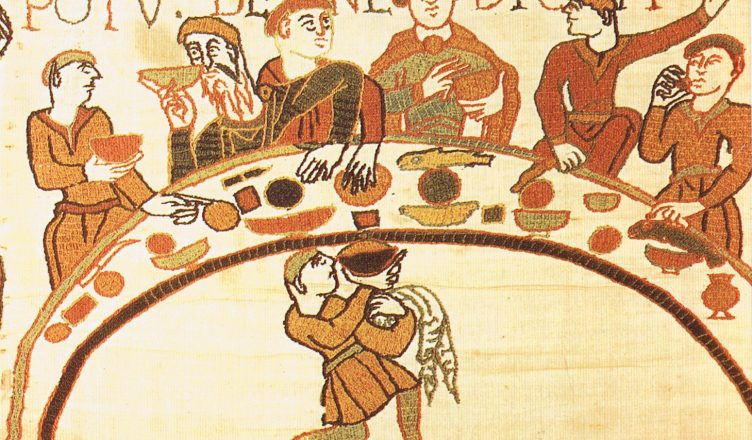Christmas in the Middle Ages was celebrated slightly differently than it is today. Perhaps the most notable difference is the sheer size of the Christmas feast. In 1213, King John of England held a feast that included 1,000 chickens, 10,000 salted eels, 100 pounds of almonds and nearly 6,000 bottles worth of wine. Even peasants were entitled to better food than normal. Christmas was one of the few times most peasants were entitled to meat (even beef!) from their manorial lord. Christmas was a time for celebration, and it was taken as an opportunity to keep spirits high in the cold winter months.
A familiar tradition that originated in the medieval era is that of the nativity scene. It is believed to originate from St. Francis of Assisi, who made a crib in a cave on Christmas Eve in 1223. Though modern nativity scenes have a collection of statues surrounding the Christ child, these original crib scenes had just the infant Jesus and two animals to keep him warm. By the late Middle Ages, Mary and Joseph were added, along with the shepherds. The tradition of the wise men in the scene didn’t emerge until later, as the Epiphany was still widely celebrated during the Middle Ages. In the west, the Epiphany marked the day the wise men came to Jesus and glorified God in his incarnate form.
An interesting custom in Western Europe was that of the Christmas Bishop, a young boy who was elected as bishop for a day on the 28th, which commemorated the massacre of innocent infants by King Herod. The “bishop”would wear proper garments. He would even give a pretend mass—the bishop would marry youths—occasionally in front of the king. The new couples would offer the bishop a gift in thanks. If the bishop disapproved of the gift, he would smack them with a bag of ashes he kept hidden under his coat. The marriages only lasted one night, however.
In medieval Scandinavia, there were several interesting traditions surrounding Christmas that involved demonic figures. In various parts of Northern Europe, young men would try to scare people in the middle of the night during the 12 days of Christmas. They wore scary masks and tried to act like ghosts, devils, or even trolls. In Iceland specifically, there was a belief that real trolls were wandering the world during those dark days. Various sagas say that people feared that the trolls would consume their livestock on Christmas. In Eyrbyggja Saga, even ghosts invade Christmas parties. The ghosts try to knock the mud off their clothing and splatter the invited attendants with it. Eyrbyggja’s story is notable for its high presence of supernatural events, but having ghosts crash your Christmas feast must have been especially shocking!
Christmas today is more than a religious event to celebrate the manifestation of God on earth, but that has been true for centuries. Medieval Christmases, though differ- ent from our own, were still a time to celebrate with your loved ones. It was a time for feasts, games, and laughter, but also a dangerous time. We don’t worry as much about hooligans in masks after Halloween nowadays, luckily. For the people of the Middle Ages, though, there fears surrounding the festive season were adequately justified.





